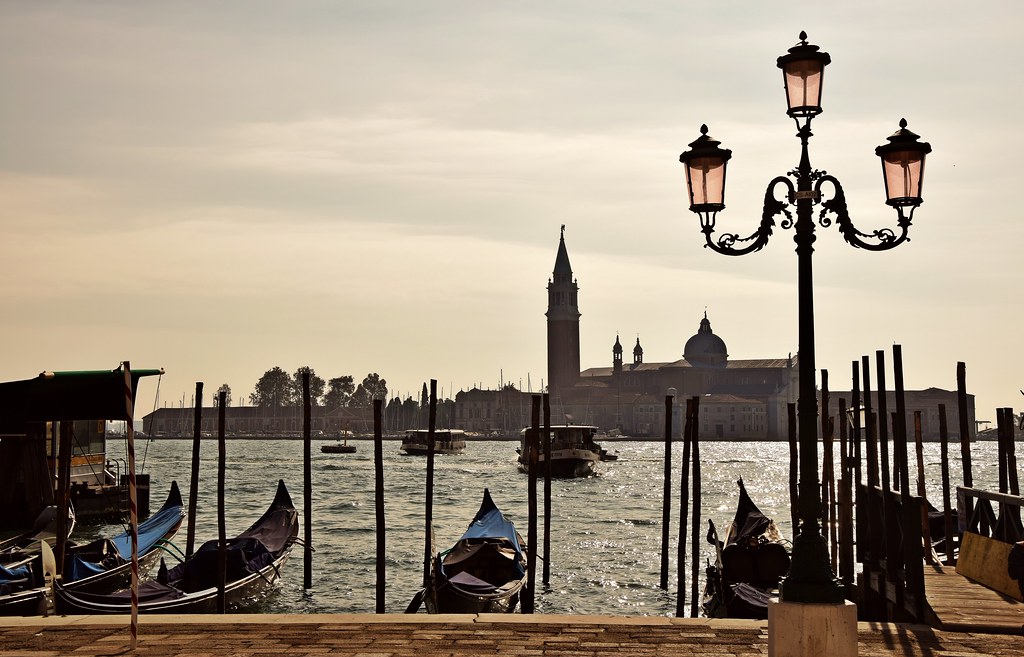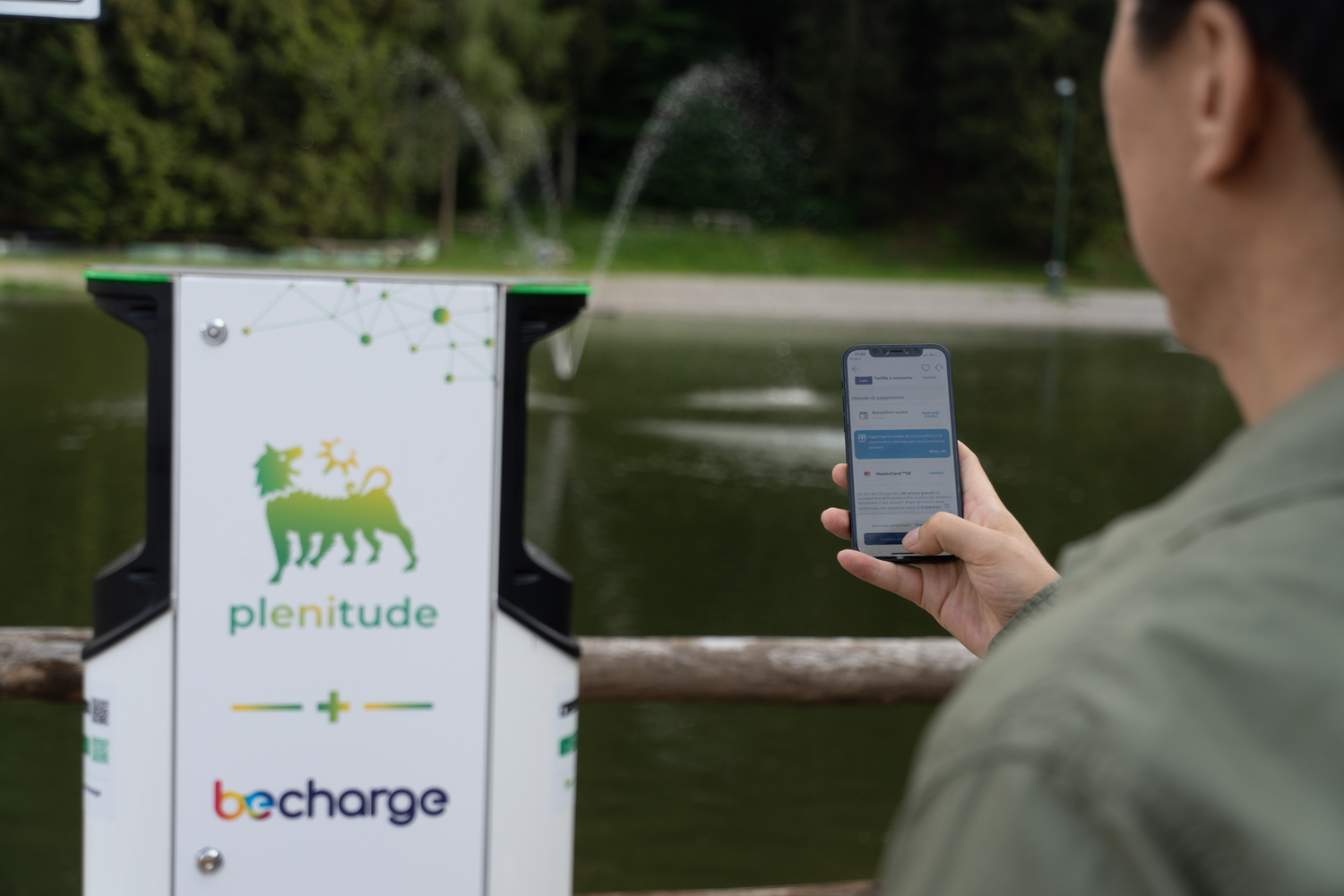,What winds from Bisceglie to Gallipoli is an itinerary that unites the Adriatic and the Ionian, the two seas that bathe one of the richest regions of italy’s landscapes, that Puglia that is told with its sea and its endless countryside, its beaches and its cities rich in history and art, its hills and its villages sometimes enchanted, full of charm and scents, guardians of traditions that in these parts still mark life and everyday life, places where even at the table you can breathe history, where flavors exude genuineness.
Our electric car tour lands in Puglia
Bisceglie marks the departure for Gallipoli, in a path that winds through the beautiful Giovinazzo, the historic Bitonto, Bari, the capital, to continue to Polignano a Mare, a postcard village, Castellana Grotte and Fasano, and then in the white cities of Locorotondo and Ostuni, until you reach Lecce, a museum city, to then close on the banks of the Ionian Sea, in Gallipoli.
Day 1: Bisceglie, Giovinazzo and Bitonto
Bisceglie
After completing the recharge at one of the different Plenitude+Be Charge columns in Bisceglie, we allow ourselves a visit to the two treasures of the town, the co-cathedral of San Pietro Apostolo, built between 1073 and 1295, in Apulian Romanesque style, and the church of Santa Margherita, also in Romanesque style, and dating back to 1197.
Giovinazzo
Leaving Bisceglie we continue towards Giovinazzo, one of the most beautiful seaside villages in the region, with its characteristic marina and beautiful promenade. Among the treasures of the village there are the Arch of Trajan – among the oldest gates of the city and named after the emperor who in Roman times would have reinforced the walls of the village – and the cathedral of Santa Maria Assunta (among the boasts of Giovinazzo in Apulian Romanesque style, it houses medieval liturgical furnishings).
Also noteworthy are the thirteenth-century table of the Madonna di Corsignano and the precious Romanesque crypt, the church of Santa Maria di Costantinopoli, the Palazzo Ducale and Palazzo Severo, with its elegant medieval façade. Lunch in one of the premises of the center to savor a plate of ravioli stuffed with shrimp and scallops and close with a lemon sorbet.
Bitonto
We leave the beautiful Giovinazzo to reach the nearby Bitonto, which deserves a visit even just for its splendid cathedral. Surrounded by extensive areas of olive groves and known for its historic oil production, it is home to the first national gallery in Puglia, the largest Diocesan Museum in the region and the splendid cathedral, among the most beautiful examples of Apulian Romanesque architecture.
Built in the twelfth century, it joins the enchanting exterior, characterized by deep arches, the last of which preserves a Gothic portal known as the “door of the Excommunication”, the interior with three apsidal naves. Remarkable is the wooden trussed ceiling with polychrome decoration and the crypt.
Other churches embellish Bitonto, as well as many historic buildings including Palazzo Vulpano-Sylos, a national monument, built in the second half of the fifteenth century, with the portal with late-Gothic Aragonese elements, and Palazzo Sylos-Calò, in late-Renaissance style.
Also worth seeing are the obelisks: from the Spire of the Immaculate, a small Baroque obelisk in Piazza della Cattedrale, to the Carolino obelisk, located in Piazza XXVI Maggio 1734, built by order of Charles III of Bourbon in 1741.
After so many treasures we sit in one of the restaurants in the city for dinner. Potatoes, rice and mussels are a classic of Apulian cuisine that we could not miss after a day full of surprises and so much beauty.

Day 2: Bari and Polignano a Mare
The capital of Puglia is the destination of the second day of the itinerary. The most characteristic area of the city is certainly the San Nicola district, called by its inhabitants Bari Vecchia.
Bari
Located on a peninsula between the old and the new port, it is like a large ancient village located in the heart of the capital. Between the Adriatic Sea and the Murat district, it is a suggestive alternation of squares and alleys enclosed within the ancient walls, which house forty churches and small churches and 120 votive shrines.
It is a aimless walk that leads us to the discovery of Bari Vecchia, among courtyards, characteristic views, scents, colors, to discover a corner of the city that preserves traditions and city culture. An area that was once unsafe and unvalued, and that today is instead an extraordinary historical and architectural showcase.
From Piazza del Ferrarese to Piazza Mercantile, the political center of the medieval city, overlooked by the Palazzo del Sedile, where the city’s nobility once gathered, it is a succession of surprises and picturesque views.
Do not miss the Byzantine cathedral of San Sabino of 1034, an example of Apulian Romanesque, the basilica of San Nicola, a destination for pilgrims from all over the world, and the church of San Marco dei Veneziani, built to thank the lagoon people for having freed the people of Bari from the occupation of the Saracens in 1002.
And then the Swabian castle wanted by Frederick II of Swabia, home of Isabella of Aragon in the sixteenth century, to be then, in the nineteenth century first prison and then barracks. Lunch in Bari Vecchia with a good fish soup.
Polignano a Mare
We leave the capital to descend south along the Adriatic coast and reach another of the pearls of the Apulian coast, Polignano a Mare. Polignano is the birthplace of the unforgettable Domenico Modugno, celebrated with a large statue. It is certainly an unmissable stop for those who come to this wonderful corner of Puglia.
The village also offers one of the most beautiful views of the Mediterranean, the one that can be enjoyed from a terrace overlooking Lama Monachile, the dream beach of the village. Enchanting the historic center, which among narrow streets, alleys and squares leads us to discover Piazza Vittorio Emanuele on which overlooks the Palazzo dell’Orologio.
Ancient nucleus rich in historic buildings including the church of Sant’Antonio, the Mother Church of Santa Maria Assunta and the Marchesale Palace. Also worth seeing is the old Jewish ghetto where the former cathedral, the beautiful chapel of St. Stephen and the church of Purgatory are located.
Polignano a Mare is also and above all sea. For lovers of cave excursions there are the Blue Grotto, that of the Rondinelle, that of the Fidanzati and the Palazzese cave. Fish dinner with a plate of paccheri cacio, pepper and shrimp tartare, and a mulberry sorbet.
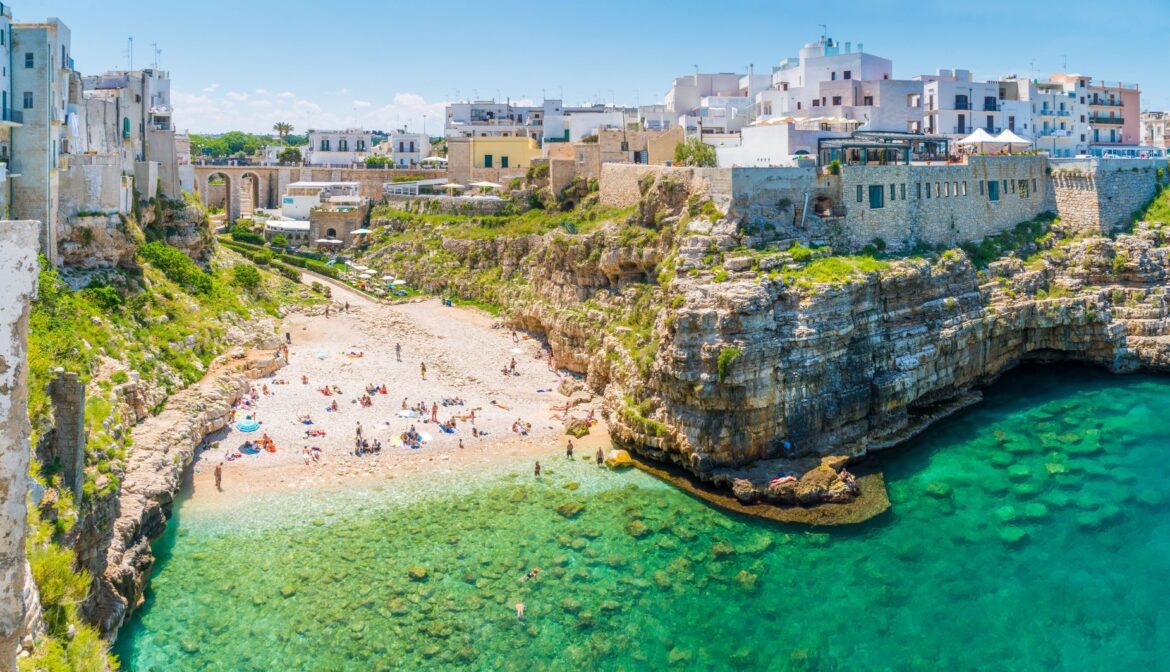
Day 3: Castellana Grotte, Fasano and Locorotondo
Castellana Grotte
The morning of the third day is dedicated to one of the wonders of nature in Puglia, the caves of Castellana in Castellana Grotte. A visit that leaves you breathless that to the caves, an extraordinary complex of underground cavities of karst origin.
An emotional journey through caves and chasms, which have been given mythological or fantastic names. From the Grave to the Black Grotto, from the Cavernone dei Monumenti to the Caverna della Civetta, from the Corridor of the Snake to the Piccolo Paradiso, from the Crystal Pond to the White Grotto, just to name a few of the environments of the route, it is a succession of beauty and amazement, a natural wonder that often leaves you breathless.
Fasano
Leaving Castellana Grotte we head to Fasano where, after more than 150 kilometers of travel, we leave the car for charging at the Plenitude+ Be Charge column in via Marco Pacuvio. We take the opportunity to have lunch in one of the restaurants in Fasano, where we indulge in battered pumpkin flowers and gnocchi stuffed with eggplant, basil and provola.
Locorotondo
After lunch in Fasano, with the car charged we leave again. Locorotondo is the destination of the afternoon. Among olive groves, farms and oil mills we reach one of the beautiful white cities; with an ancient heart with a circular shape with a singular conformation reminiscent of a cake, Locorotondo is perched on a hill and can be visited slowly through alleys and panoramic views of the countryside below.
It offers a historic center with characteristic paved streets, where the eighteenth-century church of San Giorgio Martire deserves a stop. In addition, it was chosen for film shoots such as “Così è la vita” by Aldo Giovanni and Giacomo and “Baciami piccina” with Vincenzo Salemme.
While the living room of the city is Piazza Vittorio Emanuele, an elegant glimpse of the ancient area. Native wine and local olive oil are the obligatory purchases of the village.
Gourmet stop in one of the premises of Locorotondo with a plate of orecchiette with ricotta and a taste of chicken with peppers.
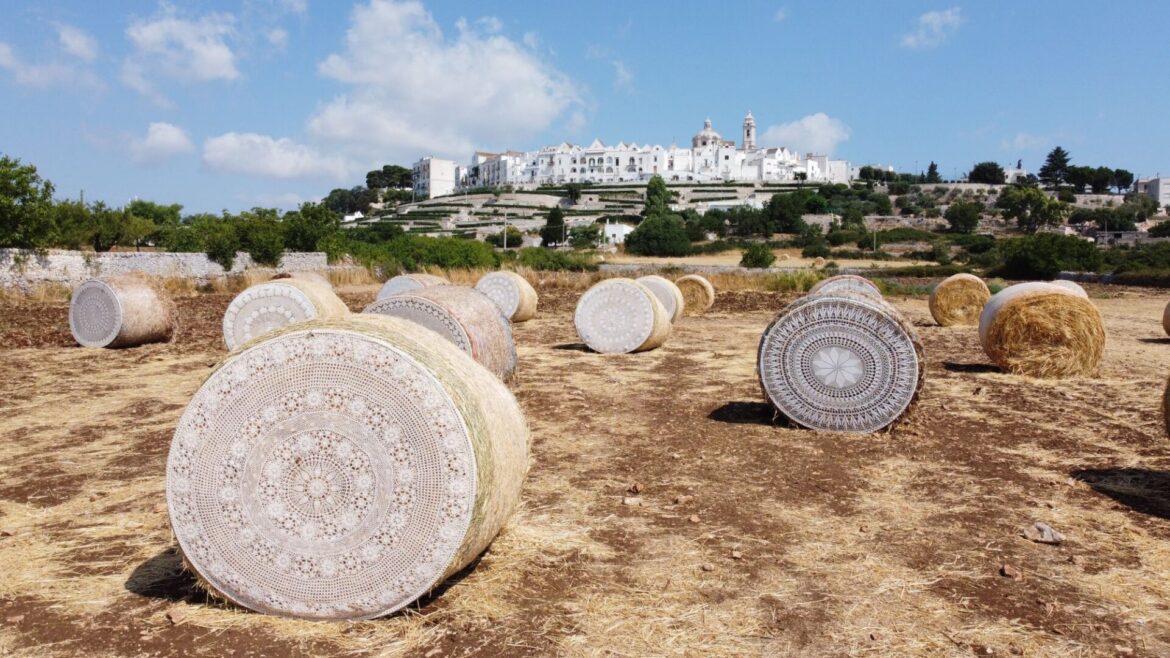
Day 4: Ostuni
A few kilometers from Locorotondo there is Ostuni, another white jewel of the extreme southern Murgia. Occupied by Ostrogoths, Lombards, Saracens, Moors, Swabians and Normans, it has in its ancient part, called La Terra, its most picturesque area.
Surrounded by the imposing city walls, it is a succession of characteristic views and views of the plain below. Characterized by a continuous ups and downs, the walk in the historic center reveals countless corners full of charm.
Among the treasures of Ostuni there are the co-cathedral of Santa Maria Assunta, from the inside with a painted flat ceiling, baroque chapels and a wooden altar of the first half of the eighteenth century.
Dinner based on local cold cuts, including homemade salami and capocollo di Martina Franca, and cheeses such as cacioricotta, burrata and giuncata.
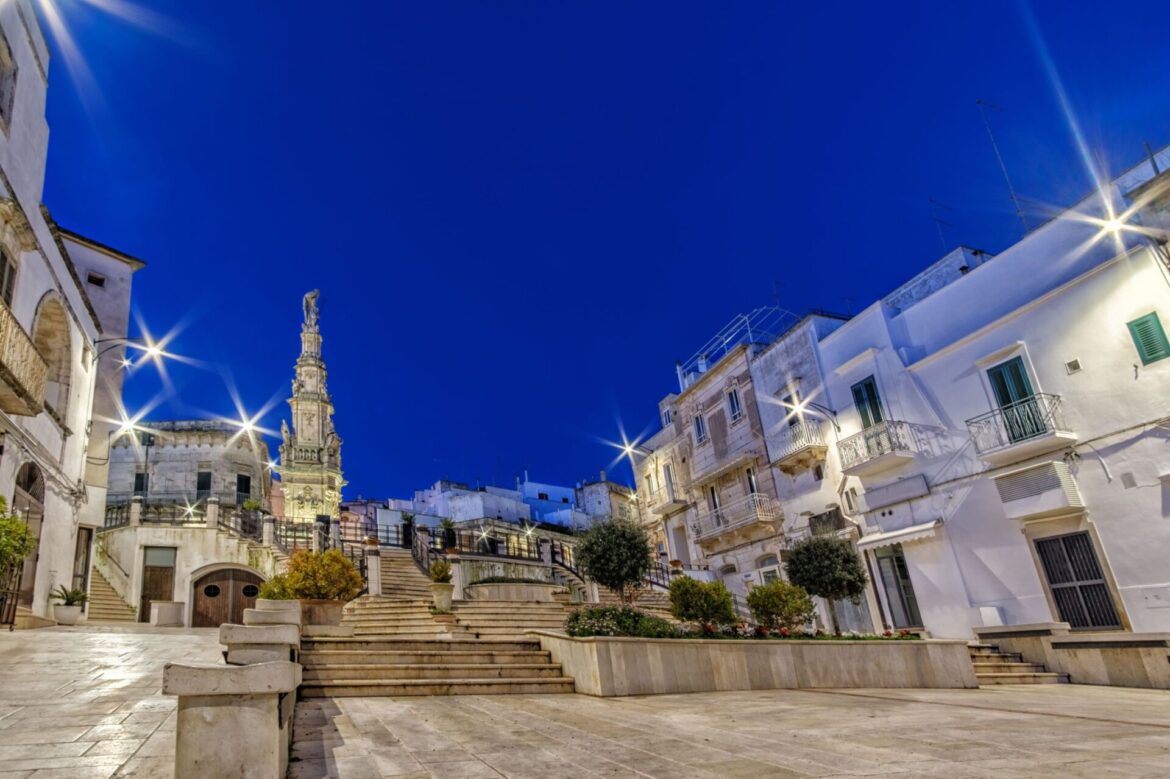
Day 5: Lecce and Gallipoli
Leaving Ostuni we head to Lecce, pearl of Salento.
We enter the historic center of the city to discover its many baroque treasures: the religious heart of the capital is the metropolitan cathedral of Santa Maria Assunta, from the inside with 13 altars. Another treasure not to be missed in the city is the Basilica of Santa Croce with the nearby Government Palace.
Lecce
The walk in the heart of Lecce can not fail to reach Piazza Sant’Oronzo, from which you reach one of the most evocative corners of the city, the Roman Amphitheater, a wonder of the Augustan age. The many treasures of Lecce architecture are joined by the many characteristic artisan shops where you can shop.
Lunch in one of the premises of the center for a taste of Apulian capocollo and continue with the tasty pieces of horse with tomato sauce, which we accompany with a full-bodied red wine like salice Salentino.
Gallipoli
The itinerary in the lands of Puglia ends in the nearby Gallipoli, about thirty kilometers from Lecce, an important tourist resort on the shores of the Ionian Sea. It is on an islet connected to the mainland by a bridge, surrounded by crystal clear waters, that the ancient area of the Ionian town is located.
To announce the arrival at the old town is the Angevin Aragonese castle, near which stands the beautiful Greek fountain of the sixteenth century and the chapel of Santa Cristina, a devotional destination of local fishermen.
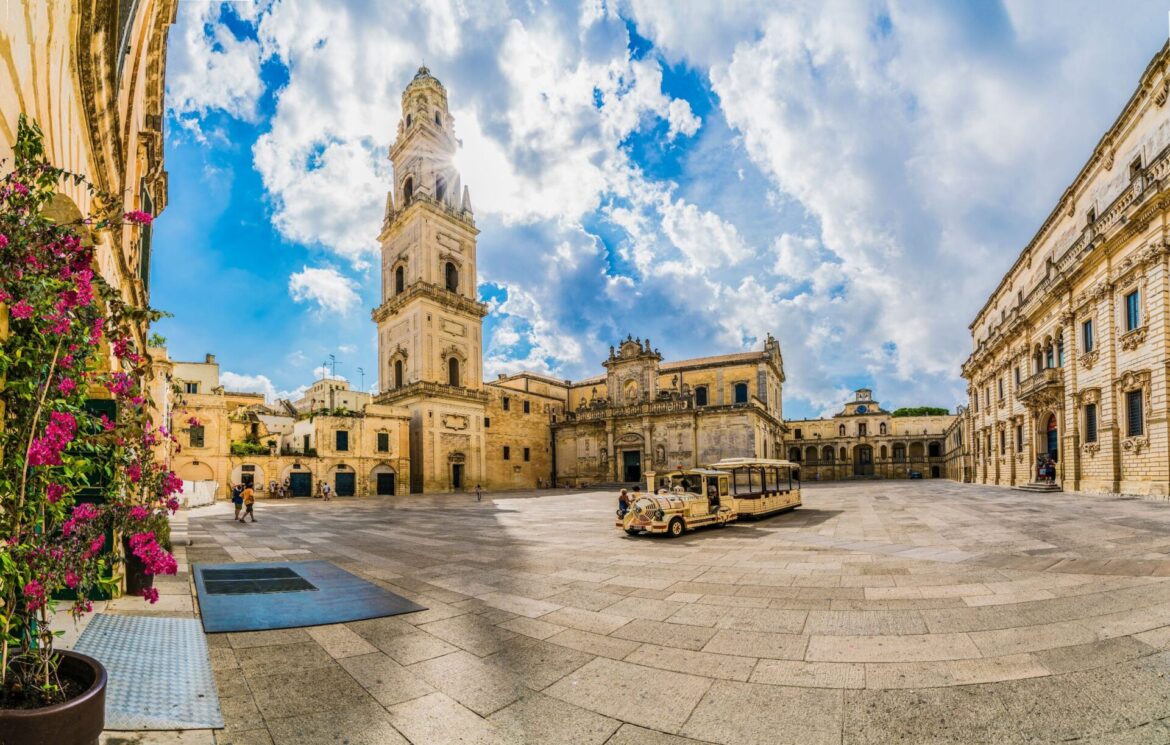
Treasure of the old city is the co-cathedral of Sant’Agata, one of the most important expressions of Salento Baroque: richly decorated has on the outside numerous niches containing stone statues of Santa Teresa d’Avila, Sant’Agata, San Sebastiano, San Fausto and Santa Marina, with the interior that has interesting baroque altars.
It is the scents of the restaurants that bring us to the table for the last meal of the itinerary in which we enjoy the scapece, a traditional recipe that involves frying in boiling oil the small fish that are then passed in breadcrumbs and marinated in a solution of vinegar and saffron, which we taste with a leccese white wine, the Leverano.







